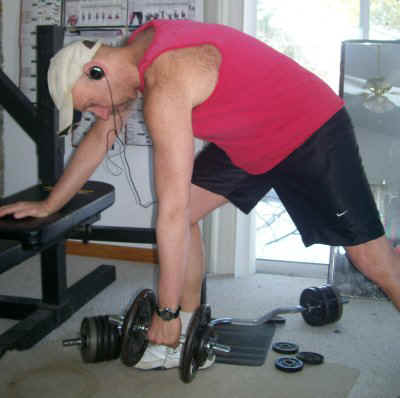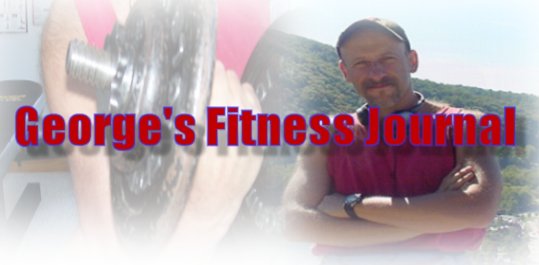|
Wednesday, July 25 , 2007
Competition involves proving your supremacy over a rival. Basketball
calls on a variety of individual skills that lend themselves to this
form of self-evaluation. Basketball also allows the individual to assess
his or her own performance when compared with previous efforts over
time. If you don't win (achieve victory through superior
skills), the player can find some comfort in how well skills and
knowledge of the game were executed (how well you played the game).
The team effort is made up of the combined skills of five players on the
court at any given time. If those combines efforts don't lead to a
victory, you'll have to take inventory of your contribution, both on
offense and defense. You may find that you executed the best performance
of your career, but it just wasn't enough of a team effort to put a
victory in the win column.
My last basketball session was a mixed experience because out of five
games played, I was not on a winning squad, but my own personal
performance was one of my best over this summer, if I may be so bold to
assess myself so positively. I made no more mistakes than any one else
did on the court, and I helped make more successful plays than I usually
do. On the down side, I did shoot an airball when making a three-point
attempt. But I did block two passes, one of which I retained as a steal
and dribbled to the basket at the other end of the court. Seeing an open
driving lane, I took it to the hoop. This was just about a first for me,
and it felt great when a teammate said "Go George, coast to
coast!" That may have been the first time anyone ever said that
about something I was doing on the court.
I am still not getting the number of "touches" from teammates
that I think I deserve. In layman's terms, my teammates aren't passing
me the ball as many times as I would like. I get rejected often, even
when I am clearly open. I guess I don't have the percentage of shots
made that would allow them to feel confident once the ball is in my
hands. One opposing player said in a joking way, "George, you gotta
carry your team on your back!" I responded, "I would if
I can get more touches." Another player, one who never pays me a
compliment, chimed in, "you won't get any more touches. Our defense
is too strong." I left it there, but that motivated me to make a
play happen in our favor. On the next play, I struggled for a rebound
that went out, but I broke up the other team's offense. I heard
"good hands, George!" from teammates. Later, an opposing
player nailed me in the jaw with an elbow. The pain causes my endorphins
and adrenaline to flow, and my intensity gets even stronger. It was
right after that event that I made the two blocks and the steal that led
to the score.
In spite of all my efforts, in five games, I was never on a winning
squad. It would be easy to be down on myself, thinking that I was the
common denominator. But that would only bring down my performance.
Instead, I choose to examine my performance positively, saying my
efforts led to the score for my teams as high as they were. No, I am not
a good shooter, and opponents against whom I had to defend did score.
But I know my performance was good because my effort was at its greatest
intensity. When a fellow player, one on the winning team, said to me in
a sarcastic way, "George, you gonna be OK?" I responded,
"I know my effort was good and I don't really care if I win or
lose." He said "yea, you did play pretty well today." That meant more to me than winning. We had nine players, so I had to sit
for one game. It would have been less of a cardio workout if there were fifteen
or so of us, and I would have had to sit for more games, but I came away
a more confident player, not because my team made it into the win
column, but because I played like a winner.
Stay healthy,
George
geocas@aol.com or georgecassutto@hotmail.com
|
Exercise #10: The Bent- Over Dumbbell Row
|
|
According to Men's Health, which is the
fitness magazine to which I subscribe, one hallmark of a fit
body is the V-tapered look. In a grotesquely exaggerated way,
here is what it would look like:

Courtesy:
http://www.physiquebodywareusa.com/
As much as I would like to achieve that level of
fitness, I can only strive to improve step-by-step. By adding
weight incrementally as one level becomes easier to master, you
can add muscle mass, which translates to size. In
earlier entries, we saw how the lat pull down helps develop
the back muscles which give the body a V-taper. Shown at right,
I wanted to add the bent-over dumbbell row to your arsenal of
weight training exercises.
The bent-over dumbbell row primarily puts the
latissimus muscle to work, but I also feel tension in both legs
as I bring the weight up (I am up to a 40-pound weight on this
move). You'll feel it in the hamstring of the
leg that is extended, and you'll feel your quad muscle work in
the leg that is perpendicular to the floor. Your triceps muscles
(there are three, remember?) in the back of your upper arm will
also get some work on this move.
Some bodybuilders place their knee on the bench and let their
weight hang over the bench with the available arm. To make the
move more challenging, you can do the move with two dumbbells at
the same time, but you'll need to make the weight lighter since
you have no way to brace yourself.
|

Place your mouse over the image to see the
correct move.
|
|
Some tips to maximize the effect this
exercise:
-
Use a heavier weight on this move since you
are pulling the weight up, but be careful not to use so much
weight that you lose form. Too much weight can also cause
injury.
-
Pull the weight so your elbow extends above
your waistline.
-
Don't allow momentum to carry the weight up
or down. be sure the muscle is doing the work -- not
gravity or momentum.
-
Don't turn your torso in such a way that the
lat muscles don't do the work. Keep your body parallel to
the floor.
|
|
